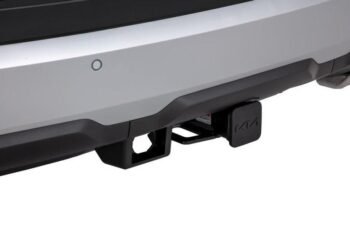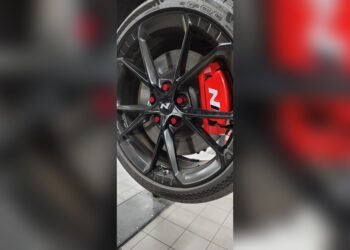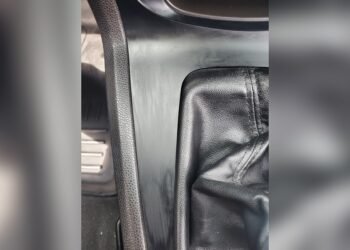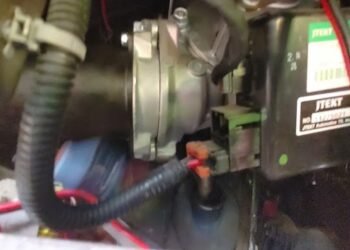You might be wondering, “Can you ceramic coat chrome?” If you want your chrome parts to shine longer and resist dirt, stains, and minor scratches, ceramic coating could be the answer.
But is it really safe and effective on chrome surfaces? You’ll discover how ceramic coating works on chrome, what benefits you can expect, and the potential drawbacks you should know before applying it yourself. Whether you’re protecting your wheels, exhaust tips, or trim, understanding this process can save you time and money while keeping your chrome looking flawless.
Keep reading to find out everything you need to know about ceramic coating chrome!
Ceramic Coating On Chrome
Ceramic coating on chrome surfaces offers a strong shield that enhances durability. Chrome parts are prone to rust, tarnish, and scratches. Applying ceramic coating helps protect these surfaces and keeps them shiny longer.
This coating forms a thin, transparent layer over chrome. It bonds chemically to the surface for lasting protection. The process is suitable for various chrome parts found on vehicles and motorcycles.
Benefits Of Ceramic Coating For Chrome
Ceramic coating repels water, dirt, and grime from chrome surfaces. This reduces cleaning time and effort. It also protects chrome from oxidation and rust. The coating adds scratch resistance, helping to preserve the finish. It increases the lifespan of chrome parts by shielding them from harsh elements.
Common Chrome Parts To Coat
Popular chrome parts for ceramic coating include exhaust tips, wheels, trim pieces, and bumpers. Motorcycle forks, handlebars, and frame sections also benefit from coating. These parts face constant exposure to weather and road debris. Ceramic coating helps maintain their appearance and prevents damage.
Effect On Shine And Protection
The coating enhances the natural shine of chrome. It creates a glossy, mirror-like finish that lasts longer than wax or sealants. Protection against water spots and minor scratches is improved. The surface stays cleaner and resists fading under sun exposure. Overall, ceramic coating keeps chrome looking new and vibrant.
Application Process
The application process of ceramic coating on chrome requires care and precision. It ensures strong protection and a shiny finish. Proper steps improve the coating’s durability and appearance.
Follow the right method to avoid mistakes. Use suitable tools and products for best results. Each step matters to get the perfect coat on chrome surfaces.
Preparation Steps
Start by cleaning the chrome thoroughly. Remove all dirt, grease, and old wax. Use a gentle cleaner made for chrome surfaces.
Dry the area completely with a soft cloth. Inspect the chrome for scratches or stains. Fix any imperfections before coating.
A smooth and clean surface helps the ceramic coat bond well. Skip this, and the coating might peel off quickly.
Tools And Products Needed
You will need a ceramic coating kit designed for metal or chrome. Kits usually include the coating liquid, applicator pads, and microfiber towels.
Also gather isopropyl alcohol or a prep spray to remove oils. Have gloves ready to protect your hands. Use a dust-free, shaded workspace.
Good lighting helps spot missed areas. Avoid windy or dusty places to keep the surface clean during application.
Step-by-step Coating Guide
First, wipe the chrome with isopropyl alcohol to remove residues. Let the surface dry fully before applying the coating.
Apply a small amount of ceramic coating on the applicator pad. Spread it evenly over the chrome using smooth, overlapping strokes.
Work on small sections at a time to control coverage. Wait for the coating to flash or haze, usually within a few minutes.
Buff the surface gently with a clean microfiber towel. This removes excess product and levels the coating.
Allow the coating to cure as per the product instructions. Avoid touching or exposing the chrome to water during this time.
Multiple layers can be applied for stronger protection. Just wait the recommended time between coats for best results.
Diy Vs Professional Application
Ceramic coating chrome surfaces can boost shine and protection. Deciding between DIY and professional application matters. Each method has unique benefits and challenges. Understanding these helps you choose the right approach for your needs.
Pros And Cons Of Diy
Doing it yourself saves money and gives control over the process. You can apply the coating at your convenience. DIY kits come with instructions and all necessary materials.
DIY requires patience and careful preparation. Mistakes can cause uneven coating or damage. Some steps, like polishing, need skill for best results. The coating may not last as long as a professional job.
When To Choose Professionals
Choose professionals for complex or valuable chrome surfaces. Experts ensure thorough cleaning and flawless application. They use high-quality products and tools unavailable to most DIYers. Professionals fix surface issues before coating for better adhesion. Their work usually lasts longer and offers stronger protection.
Professionals save you time and reduce risks of errors. Ideal for those who want a perfect, durable finish without hassle.
Cost Comparison
DIY kits typically cost less upfront, around $50 to $150. Professional services range from $300 to $1,000 or more. The price depends on surface size and prep work needed.
DIY saves money but risks wasted product from errors. Professional application costs more but can protect your investment better. Consider how much time, skill, and quality you want before deciding.

Credit: www.reddit.com
Maintenance After Coating
After applying a ceramic coating to chrome surfaces, proper maintenance is key. It keeps the coating effective and the chrome looking bright. Without care, dirt and grime can build up and dull the shine. Regular upkeep helps preserve the coating’s protective qualities and extends its lifespan.
Maintaining ceramic-coated chrome is simpler than it seems. A few careful habits and the right products will keep your chrome gleaming and shielded from damage.
Cleaning Techniques
Use soft microfiber cloths or sponges to clean chrome. Avoid rough materials that can scratch the surface. Wash the chrome gently with water and mild soap. Rinse thoroughly to remove all soap residue. Dry the surface with a clean microfiber towel to prevent water spots. Clean often to stop dirt from settling and damaging the coating.
Products To Use And Avoid
Choose pH-neutral car shampoos for cleaning ceramic-coated chrome. These products are gentle and do not harm the coating. Avoid acidic or alkaline cleaners that can wear down the ceramic layer. Steer clear of abrasive polishes and harsh chemicals. They can scratch or dull the chrome finish. Stick to products made for coated surfaces to ensure safety and effectiveness.
How To Maintain Shine
Apply a ceramic booster or spray sealant designed for coated surfaces. This helps restore gloss and strengthen protection. Use these products every few months or as needed. Keep the chrome dry and clean after each use. Parking in shaded areas limits UV damage and fading. Regular maintenance keeps the chrome bright and extends the ceramic coating’s life.
Limitations And Drawbacks
Ceramic coating on chrome surfaces offers many benefits, but it also has clear limitations. Knowing these drawbacks helps set the right expectations. Chrome parts require special care, and ceramic coatings are not a perfect solution. Understanding what ceramic coating can and cannot do is essential before application.
Not Permanent Protection
Ceramic coating does not last forever on chrome. Over time, it wears off due to exposure to elements. Sunlight, rain, and road debris gradually break down the coating. Regular reapplication is necessary to maintain protection. This ongoing upkeep can add to the cost and effort.
Scratch And Chip Resistance
Ceramic coatings provide some scratch resistance but cannot stop all damage. Hard impacts or sharp objects can still chip or scratch chrome surfaces. The coating adds a thin layer of protection but is not as thick as paint protection films. Careful handling is still important to avoid cosmetic damage.
Potential Water Spot Issues
Water spots can appear more visible on ceramic-coated chrome. Minerals in water may leave marks if not wiped off quickly. These spots can etch the coating if left too long, damaging the finish. Proper drying and maintenance reduce this risk but do not eliminate it entirely.

Credit: avalonking.com
Common Mistakes To Avoid
Ceramic coating chrome surfaces can give a brilliant shine and strong protection. Avoiding common mistakes ensures the best results. These errors can cause poor adhesion, dull finish, or damage. Learn what to watch out for before you start coating your chrome parts.
Improper Surface Preparation
Cleaning chrome well is essential. Dirt, grease, or old wax prevents coating from sticking. Use a gentle cleaner and a microfiber cloth for best results. Skipping this step leads to uneven coverage and faster wear. Always dry the surface fully before applying the coating.
Incorrect Application Methods
Applying too much product causes streaks and uneven layers. Use small amounts and spread evenly with a soft applicator. Avoid direct sunlight or very hot surfaces during application. These conditions make the coating dry too fast and reduce its effectiveness. Follow the product instructions closely for best results.
Neglecting Regular Maintenance
Coating does not last forever without care. Wash chrome surfaces gently and avoid harsh chemicals. Use pH-neutral car shampoo and soft cloths to keep the coating intact. Regular upkeep prevents water spots and dirt buildup. This step keeps your chrome looking shiny and protected longer.
Removing Ceramic Coating
Removing ceramic coating from chrome surfaces can be a tricky process. Ceramic coatings bond strongly to chrome, creating a tough protective layer. Sometimes, removal becomes necessary to fix damage or apply a new coating. Understanding the removal process helps protect your chrome and maintain its shine.
When Removal Is Necessary
Removal is needed if the coating is damaged or peeling. Old coatings may lose effectiveness over time. Contamination that does not wash off may require removal. You might also remove the coating to change to a different product. Proper removal ensures the chrome surface stays smooth and clean.
Removal Techniques
Clay bars can remove light contamination on coated chrome. Polishing with a mild abrasive helps remove the coating layer. Professional-grade chemical removers dissolve ceramic coatings safely. Mechanical methods like buffing require care to avoid damage. Always test removal methods on small areas first.
Challenges In Removal
Ceramic coatings bond tightly to chrome, making removal hard. Abrasive polishing can harm chrome if done incorrectly. Chemical removers may be harsh and require protective gear. Complete removal often takes multiple steps and patience. Incorrect removal risks dulling or scratching the chrome surface.
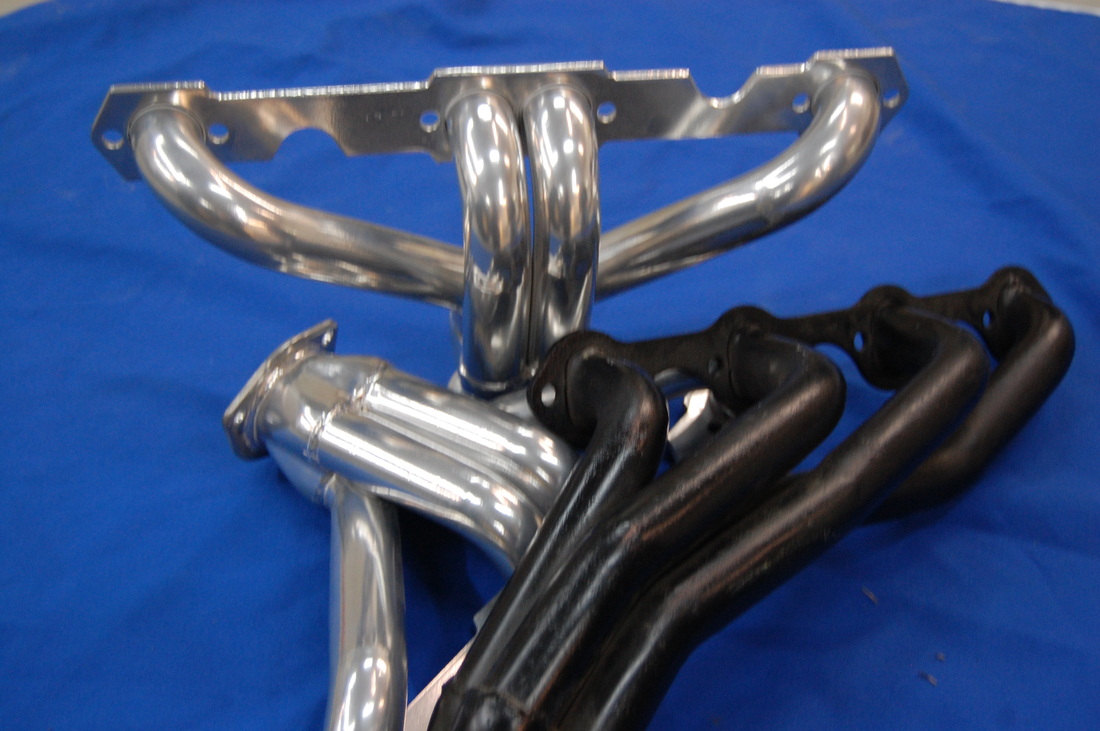
Credit: procoatplus.com
Comparing Ceramic Coating Alternatives
Choosing the right protective layer for your chrome surfaces matters. Ceramic coating is popular, but other options exist. Each alternative has unique traits that affect durability, appearance, and maintenance. Understanding these differences helps you pick the best protection for your chrome parts.
Paint Protection Film
Paint Protection Film (PPF) is a clear, thick layer that shields surfaces from scratches and chips. It covers chrome well and absorbs impact from road debris. PPF lasts several years and resists yellowing under sunlight. Installation requires professional skills, making it more costly. It adds a slight texture but keeps the shine of chrome intact.
Traditional Wax And Sealants
Wax and sealants offer a simpler way to protect chrome. Wax creates a thin barrier that repels water and dirt. Sealants last longer than wax and resist fading. Both improve shine and smoothness temporarily. They need frequent reapplication, sometimes every few months. These options are budget-friendly and easy to apply at home but provide less durable protection.
Other Protective Coatings
Other coatings include polymer sprays and nano coatings. Polymer sprays form a flexible film that guards against grime and UV rays. Nano coatings bond at a molecular level for a hard, glossy finish. These coatings vary in longevity and cost. Most are easier to apply than ceramic coatings and offer good resistance to water and contaminants. They maintain chrome’s brightness and reduce cleaning time.
Ceramic Coating For Motorcycles
Ceramic coating for motorcycles offers strong protection and shines for many parts. It creates a thin, durable layer that guards surfaces from dirt, water, and minor scratches. This coating helps keep motorcycles looking new longer. Riders often wonder about ceramic coating on chrome parts. Understanding how this works can help bike owners protect every inch effectively.
Chrome And Metal Surfaces
Chrome and metal parts on motorcycles are prone to rust and dullness. Ceramic coating forms a protective barrier on these surfaces. It repels water and stops oxidation that causes rust. The coating also makes cleaning easier by preventing dirt from sticking. Applying ceramic coating on chrome keeps it shiny and smooth for a long time.
Multi-surface Protection
Ceramic coating works on many motorcycle surfaces. Paint, plastic, glass, and metal can all benefit from it. This means the entire bike, including exhaust pipes, rims, and forks, can be protected. A single coating product often covers all these materials. It saves time and ensures consistent protection across the motorcycle.
Specific Motorcycle Tips
Before applying ceramic coating, clean the bike thoroughly. Remove all dirt, grease, and old wax. Use a clay bar for deep cleaning if needed. Work in a cool, dry place to avoid dust. Apply thin, even layers and let each dry fully before the next. Regular maintenance boosts the coating’s lifespan and keeps the bike looking great.
Frequently Asked Questions
Can You Ceramic Coat Chrome Exhaust?
Yes, you can ceramic coat chrome exhaust tips. It enhances shine, adds protection, and resists heat and corrosion effectively.
Can You Ceramic Coat Chrome On A Motorcycle?
Yes, you can ceramic coat chrome on a motorcycle. It protects chrome from rust, dirt, and UV damage. Proper surface preparation ensures a smooth, durable finish. Ceramic coating enhances shine and makes cleaning easier. Regular maintenance preserves its protective qualities and appearance over time.
What Is The Downside Of Ceramic Coating?
Ceramic coating has a high initial cost and requires professional, skillful application. It offers limited scratch protection and needs regular maintenance. The coating is not permanent and can suffer water spots or etching. Removal is difficult, and improper application can damage the finish.
Can You Coat Metal With Ceramic?
Yes, you can coat metal with ceramic. Ceramic coatings protect metal from corrosion, heat, and wear while enhancing its appearance.
Can You Apply Ceramic Coating On Chrome Surfaces?
Yes, ceramic coating can be applied on chrome to protect and enhance its shine.
Conclusion
Ceramic coating works well on chrome surfaces. It adds shine and helps protect against dirt and water spots. The coating lasts for years but needs regular care to stay effective. Applying ceramic coating requires patience and proper steps for the best results.
While it does not fully prevent scratches, it reduces damage and keeps chrome looking fresh. Overall, ceramic coating can keep your chrome parts bright and cleaner longer. Give your chrome the protection it deserves with careful ceramic coating application.


